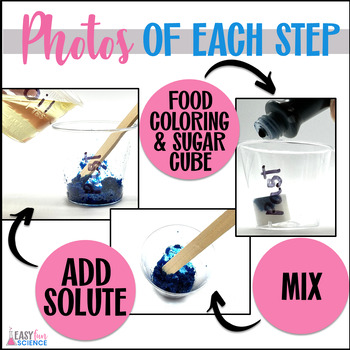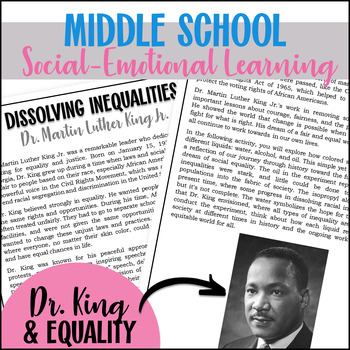Martin Luther King Jr. Science Activity - Black History Month or MLK Day
- PPTX
Also included in
- February is Black History Month! Celebrate the achievements of historical figures with this collection of Black History Month Activities for Middle and High School Classrooms. This bundle of activities includes bulletin board decor, research projects, a slideshow and two social-emotional learning acPrice $11.50Original Price $17.00Save $5.50
- February is Black History Month! Celebrate the achievements of historical figures with this collection of Black History Month Science Activities. This bundle includes two science + SEL (Social Emotional Learning) activities for hands-on fun in your middle school or upper elementary classroom!What'sPrice $4.50Original Price $6.00Save $1.50
Description
Looking for a MLK Day Science Resource for your Middle School Students? This EASY, low-prep resource, connects scientific exploration with the historical context of Martin Luther King Jr.'s efforts for social equality. This classroom activity provides an experimental setup where students observe the solubility of colored sugar in various liquids and relate these outcomes to the societal changes advocated by Martin Luther King Jr.
This resource is designed to facilitate an understanding of solubility and matter at a grade-appropriate level while encouraging students to reflect on past and present issues of social justice. It's an appropriate choice for teachers seeking to integrate science with social studies, particularly during units covering Martin Luther King Jr. or civil rights.
What Will Students Do?
- Read a passage about social equality and Martin Luther King Jr.
- Review the concepts of Mixtures, Solutions, and How Substances Dissolve
- Relate the history of social inequalities to dissolving a solute (sugar cube + Food coloring) in different solvents (oil, isopropyl alcohol and water). Each solvent represents of different era of social reform. The solute represents social injustice.
- Reflect on the activity.
What’s Included in this Activity?
- Reading Passage about social justice and Martin Luther King Jr.
- Reading Passage about Mixtures and Solutions
- Reading Passage about How Substances Dissolve
- Lists of materials
- Step-by-step instructions with photos
- Reflection Questions
- Answer Key
- Extension Activities
- Printer-friendly version
Who Is This Activity For?
- Middle school science and social studies classes
- Educators interested in lessons that combine historical context with science.
- Group leaders seeking educational activities with real-world relevance.
- Homeschool parents incorporating history into science lessons.
- Facilitators aiming to introduce discussions on equality and civil rights.
RELATED SCIENCE RESOURCES for Black History Month:
- Black History Month Activity Bundle of 6 Resources
- Black History Month Scientists and Inventors Bundle of 3 Resources
- Black Scientists Slideshow
- Black Scientists Posters
- Black Scientists Hexagonal Thinking Project with Reading Comprehension Passages
- Chalkboard Slime and Forgiveness SEL + Science Activity featuring Nelson Mandela
- Black Scientists Hexagonal Thinking Project with ChatGPT
Don't forget that leaving feedback earns you points toward FREE TPT purchases. I love feedback!
I am continually striving to improve my products. I want you to be completely satisfied with your purchase. If there is any reason why you cannot leave positive feedback, please email me and I will do whatever it takes to make things right!
Also, FOLLOW ME and be notified when new products are uploaded.
As always, please contact me with any questions!
Thank you so much,
Stephanie Morris







